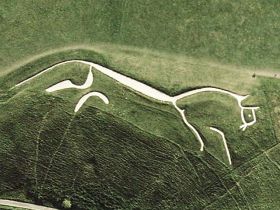Mysticism (technology)
Mysticism is one of the first technologies a region develops, enabling the rites and practices that will enable unique individuals to reach an enlightened state of consciousness.
Like all technologies, the development of mysticism is distinguished by its techniques, processes and social relationships. The page below describes the technology according to its sub-technologies (shown as minor headings). Details are further classified into tools, culture, blocks, improvements and associated references.
DEV-5
Shamanism
Enables communication with benevolent and malevolent spirits, whose threat is mitigated by the presence of a tribal shaman. Through religious ecstasy and trance, an abnormal state of wakefulness, existing spirits are appeased and encouraged to act supportively of the shaman's people. Further, the shaman manipulates wild magic through the altered states of consciousness induced by pain, fasting, herbs and extraordinary physical exertion, producing a natural degree of intoxication. The presence of the shaman adds +1 happiness to a community.
- Tools: smoke pipe, drum, rattle, gong, tokens
- Culture
- Dancing & Singing: produces a group-felt religious fervor, serving to bind clans and tribes together.
- Animal Sacrifices: promotes a stronger relationship with death and personal sacrifice, inspiring a culture of giving oneself for the good of the tribe.
- Sacred Journeys & Vision Quests: these act as a means for the strongest to obtain status within the tribe, while expanding the tribes knowledge and preparedness for the outside world. The practice also inspires the creation of sacred places and monoliths.
- Blocks
- Cairns & Columns: these are unnatural piles, or stacks, of stones, serving as landmarks and guideposts. Diviners are sometimes able to communicate with spirits related to the cairn.

- Geoglyphs: these are large designs or motives produced on the ground and formed of broken rocks or similarly durable material. These function as monoliths, but as they cannot be understood from the ground, they are comprehensible to only a small number of holy persons who understand their nature.
- Groves & Dales: these are naturally idyllic wilderness places existing as gathering places for benevolent spirits, able to heal and restore worthy persons to a state of health and life. Worthiness is determined by the manner in which the subject became infirmed, disfigured or killed.
- Monoliths & Megaliths: a humanoid-made monument in the form of tumulus, dolmens, barrows, mounds, kurgans and like structures, existing as markers, burial sites or features intended to channel magical energy. The presence of monoliths demonstrate a shared cosmology among primitive cultures. These places act as catalysts for empowerment, visions, self-awareness and direct communication with the cosmos. Their presence adds +1 culture. Megaliths are mindbogglingly immense monoliths, adding 1d6+2 culture; 1 in 100 monoliths will be a megalith. Monoliths and megaliths are commonly rock cuts.
- Sacred Places & Isles: These are naturally occurring geographical features that lend focus to wild magic and other energy, increasing the effectiveness and power of spells, typically from 20-50%. Such places are typically marked by a monolith.